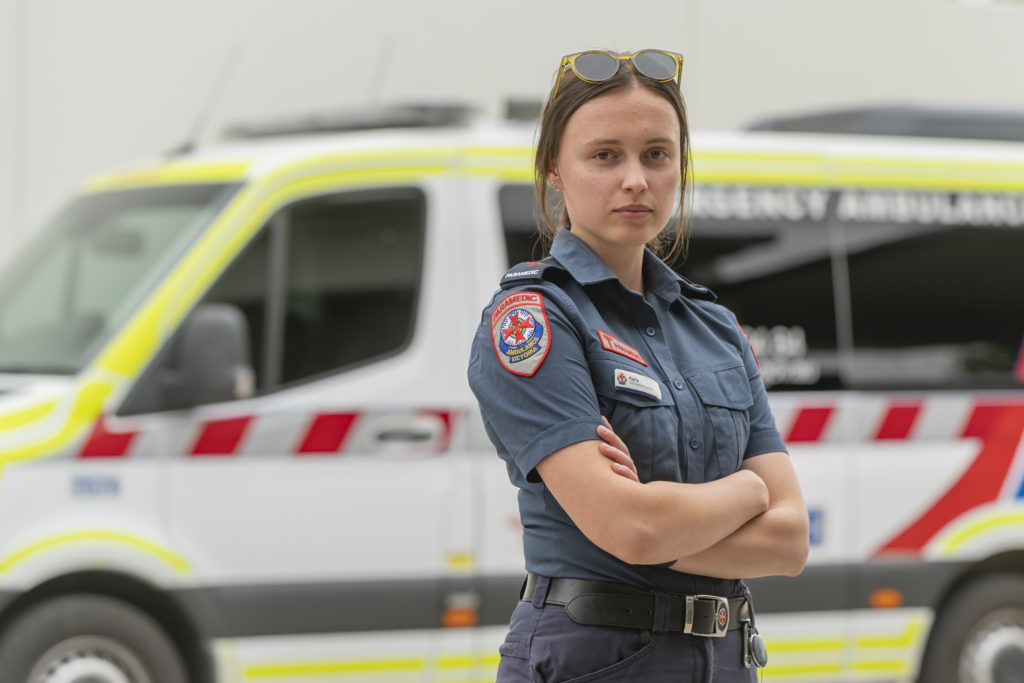News
1st March, 2021
Ambulance Workload
These concerns, as well as the discussion of alternative mechanisms to improve ambulance workload will be the VAU’s key agenda items in meetings with the AV Executive and the State Government moving forward.
The Victorian Ambulance Union Incorporated (VAU) continues to advocate on behalf of members regarding necessary increases to ambulance resources to assist with the significant demand on the ambulance industry.
As members will be aware, recently the VAU successfully lobbied for increases in paramedic resources across Victoria, which resulted in the following initiatives:

- 4 Peak Period Units (PPUs) which had been scheduled to be implemented for the 2022/23 financial year will be brought forward to be introduced in February 2021 and located at Bellarine, Bendigo (Eaglehawk), Churchill and Gisborne (Gisborne on-call arrangements will be converted to full rostered shifts);
- the conversion of Beechworth from single officer branch to dual officer branch (which had been scheduled for 2022/23 financial year) will be brought forward to 2021;
- the conversion of the Chiltern ACO team to single officer/ACO on-call;
- the introduction of an additional 12 (twelve) Referral Service Triage practitioner positions (RSTPs);
- the introduction of an additional 7 (seven) PPUs for Metropolitan region for the period commencing March to 30 June 2021, which will be located at Epping, Tarneit, Mernda, Craigieburn, Boronia, Templestowe, Bayside;
- new PPUs (and equivalents) into rural regions to be located at Benalla, Lakes Entrance, Torquay, Castlemaine, Bannockburn (Nightshift), Daylesford (Convert on-call to on-duty); and
- funding for graduates to commence working with AV. 20 graduate paramedics have already started induction. A further 20 are scheduled to start in February 2021 and another 37 will start in March 2021 to fill rural vacancies.
While this is a great step forward, it is clearly not enough to address the current workload stresses members are facing.
We understand that the provision of new resources is only addressing part of the problem and so we will continue to lobby for further investment in ambulance resourcing across the state.
Alternative improvements to address resourcing
Members should be aware that the VAU is regularly engaged in conversations with the Victorian Government and will be meeting with the Minister for Health and Ambulance Services, Martin Foley shortly regarding other ways to reduce ambulance workload.
As part of these conversations, the VAU are exploring and advocating for other structural changes to be implemented to reduce ambulance workload. For example, there is an enormous opportunity to improve your experience at work as well as reduce unnecessary ambulance attendance and transports through the following measures being adopted by Government:
- a full rollout of the Prescribing Paramedic Practitioner model across Victoria to provide options to treat patients in the home without transport;
- further expansion of Referral Services and referral options in Rural Victoria;
- better coordination of hospital aged care liaisons to avoid unnecessary transports from aged care facilities;
- improved access to mental health outreach services including CAT teams to provide more appropriate care for mental health patients;
- expansion of AV NEPT services including dual Attendant crews to provide better interhospital transport options in Rural Victoria (eg. Swan Hill to Bendigo);
- implementation of the 0.8FTE for low acuity paramedic resources (agreed to in bargaining) to enable transition to retirement options for paramedics;
- increased staffing in support services that keep crews on road including Rosters;
- increased staffing in communications centres to allow improved coordination of resources across the State, end of shift management, management of appropriate breaks and access to clinical advice;
- a recruitment strategy for MICA and MICA Flight Paramedics especially with AAV committing to move to two MFP crewing on rotary platforms;
- completion of AVs People Based Rostering work and resolution of roster grievances to improve work life balance and fatigue management which will reduce sick leave and reliance on overtime; and
- appropriately equipping management vehicles to enable managers to respond to cases during times of busy workload.
From talking to members, we know that there are several very effective local arrangements in place that provide several options to local crews other than transporting patients to hospital. However, the coordination of these measures is often limited and relies on local knowledge rather than being centrally managed so that all crews have the benefit of these arrangements. In our view, this needs to change.
In addition, for alternative options to be effective, AV’s workplace culture will also need to change. Unfortunately, many potential alternatives to transport will not be effective if members fear a heavy handed/disciplinary approach to clinical reviews. Members regularly report to the VAU that they have no confidence leaving a patient (who does not require transport) at home and instead transport all patients because they fear a disciplinary response from AV. A disciplinary approach to clinical review builds an oppressive level of risk aversity into paramedic practice. Ultimately this leads to crews transporting every patient, emergency departments becoming full, and crews being ramped at hospital
These concerns, as well as the discussion of alternative mechanisms to improve ambulance workload will be the VAU’s key agenda items in meetings with the AV Executive and the State Government moving forward.
Feedback requested
Noting the effectiveness of local arrangements, the VAU want to hear from you about examples of arrangements that work well in your area as well as any other ideas you have to reduce workload and pressure on ambulance services. As you are on-road every day, you will have some of the best ideas about how to improve resourcing issues and we want to hear from you. Please send your feedback with the subject heading Ambulance Workload to [email protected] as soon as possible.
We will keep members posted as our discussions unfold with relevant stakeholders. In the meantime, look after one another and reach out if you need help.
In Solidarity